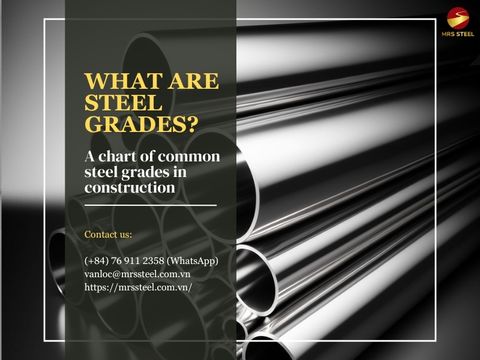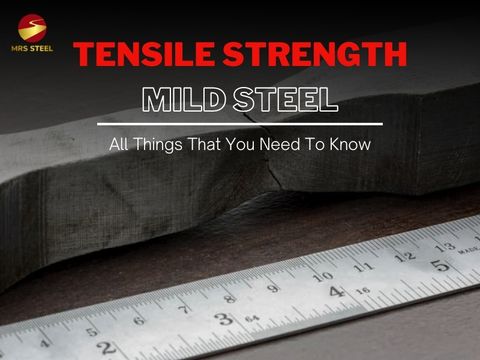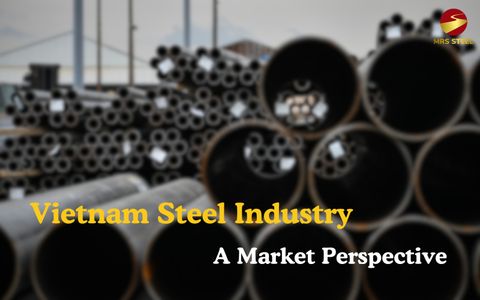Is galvanized steel toxic? Safety guide to use galvanized steel

BlogDate: 19-06-2024 by: Ngan Le
Consumers today tend to be concerned about safety and questions about "Is galvanized steel toxic?" are becoming a common question due to its widespread presence in human life. This concern even extends to worries about long-term health and environmental impacts.
So, are products sourced from galvanized steel safe for consumers when using, and do they pose risks during processing? Let MRS Steel address these concerns and provide some safety guidelines regarding this type of steel in the article below!

People are tend to wonder that is galvanized steel toxic due to its common use in daily life
What is galvanized steel? Does galvanized steel contain lead?
Galvanized steel is a popular choice in construction and household appliances because a zinc coating protects the steel core from rust and corrosion. This zinc layer acts as a sacrificial anode, corroding preferentially to protect the steel underneath. However, due to its widespread use, it's important to understand the safety of galvanized steel.
One of the main concerns is “does galvanized steel contain lead” or having other harmful impurities. Although all types of steel share the same origin from iron ore, other impurities such as lead and mercury can appear through the galvanizing process, whether it be electroplating or hot-dipping.
Therefore, most products made from this steel contain small amounts of lead, which requires manufacturers to follow strict regulations to ensure that the level of impurities remains within safe limits. Conversely, mercury vaporizes during the galvanizing process because the vaporization temperature of mercury is 375°C, while the hot-dip galvanizing process occurs at temperatures around 450°C, so mercury will not be present in the output of galvanized steel products.

This zinc plated steel contain lead with optimal concentration and no mercury in composition
Can welding galvanized steel kill you?
Although the composition of galvanized steel includes small amounts of lead and does not contain mercury, during processing such as welding, there is a risk of zinc poisoning. Specifically, as the temperature rises during the electroplating process, zinc oxide will form a greenish smoke layer emitted from the metal. If someone is exposed to excessive amounts of this smoke, it can lead to zinc poisoning.
Right after zinc poisoning occurs, the patient may experience nausea and headaches, with symptoms mostly resembling those of the flu. However, these manifestations will gradually diminish within a few hours and completely disappear after one day. In reality, zinc poisoning does not lead to death if welding is stopped immediately and finding fresh air to breath, with full compliance with protective measures before welding will reduce exposure to harmful fumes.

Zinc poisoning can occur through zinc oxide smoke generated in welding process
Is galvanized steel toxic to humans?
In its final product form, this type of steel generally poses no harm to human health, and even to animals and plants upon contact. For centuries, rural communities have utilized galvanized troughs and tanks to provide water for livestock and vegetation. Additionally, they collect rainwater from galvanized metal roofs for household use.
Therefore, to answer the question of “is galvanized steel toxic”, science has demonstrated that a small amount of zinc is considered an essential nutrient for both plants and humans. However, excessive exposure to zinc can be detrimental to health. Specifically, during processing or manufacturing, when this material is not yet finished, zinc oxide fumes are often produced at high temperatures, directly affecting workers.
In summary, galvanized steel products are not harmful to humans unless they are exposed to high temperatures, leading to zinc poisoning. Therefore, the maximum recommended temperature for the use of this metal is around 200°C, before it generates any toxic risks.

Galvanized steel is not harmful to people and the environment in its finished form
Is galvanized toxic to food and water?
This material is present everywhere in daily life. In rural areas, people use products made from zinc coated steel for various household purposes. Even in urban areas, galvanized steel has been used in residential water systems for many years, ensuring good water quality and extending the lifespan of the system.
However, according to the United States Department of Agriculture (USDA), zinc coated steel is not recommended for use with acidic foods because it does not meet safety standards. The acid in these foods reacts with the zinc coating to form zinc salts. If the human absorbs a large amount of these zinc salts, it can lead to health issues, most notably zinc poisoning.
In addition, cooking utensils made from galvanized steel are not recommended because zinc fumes, the primary cause of zinc poisoning, are released when this type of steel is heated. Initially, the concentration of zinc fumes is very low, but they tend to accumulate in the food. Consuming food containing zinc fumes over a long period can damage the respiratory system.

Plated zinc steel is used for residential water, but it is not used for cooking food
Galvanized steel in growing vegetables
In the field of agriculture or tasks related to farming and gardening, most tools are made from common and inexpensive materials such as iron, copper, or plastic. Zinc coated steel products are less frequently used for farming purposes, leading to questions “is galvanized steel toxic to plants?”.
These steel products do not directly contribute to the biological growth of plants. The zinc coating acts as a shield, protecting the steel from corrosion and thus preventing the release of heavy metals into the soil, keeping the environment safe. Even though these galvanized pots are left under the hot sun for extended periods, they do not harm plants because the moisture in the soil helps balance the temperature of the metal.
Additionally, this material offers significant support for gardening and plant management activities through applications such as stakes, trellises, and plant cages, which help protect plants from strong winds. In summary, using galvanized steel for planting has been proven safe because this steel requires acidic conditions to break down the zinc coating on its surface. However, most garden soils are neutral in pH, so it does not cause any significant effects.

Galvanized steel bring benefits in plating grows including supporting vegetable growth
How to prevent galvanized steel poisoning
The toxicity of galvanized steel typically arises from zinc fumes, a reaction that occurs during processing when the metal is exposed to high temperatures. The primary concern with using this material is not for consumers, but for welders, who are most affected if they have prolonged exposure to this material.
In the case of acute zinc poisoning, the quickest way to treat the condition is to drink plenty of milk, as the calcium in milk helps eliminate the accumulated zinc from the body. Experienced welders also recommend drinking milk before, during, and after welding galvanized steel to reduce the risk of zinc poisoning.
To avoid excessive exposure to zinc fumes, welders can use fume extractors or perform welding outdoors to dilute harmful substances. An essential protective device that cannot be overlooked is the respirator mask, which welders must always use when welding. Even when working outdoors, wearing a mask is necessary to prevent inhaling zinc oxide fumes directly into the respiratory system

Drinking milk while welding galvanized is a measure to prevent zinc poisoning
MRS Steel: Ideal partner in choosing galvanized sources for your products
MRS Steel is always the ideal partner for contractors in sourcing and negotiating quality galvanized steel at affordable prices, ensuring that customers' applications experience minimal scratching of the coating, thereby increasing the durability of the products in use.
All galvanized steel products provided by MRS Steel come with clear origins from large-scale manufacturers in Vietnam such as Hoa Phat, Formosa, Hoa Sen, Ton Dong A, etc., with full commitments to international standards, ensuring greater safety for projects. We hope that through the above article, readers have had their questions about “is galvanized steel toxic” be answered, thereby gaining a clearer understanding of this popular type of steel, and preventing unnecessary risks in the use and processing of this material.
If you're a steel importer looking to explore products in the Vietnamese market or need further details on sizes, pricing, please feel free to contact us via WhatsApp: +84 769 112 358 or email: vanloc@mrssteel.com.vn





















































